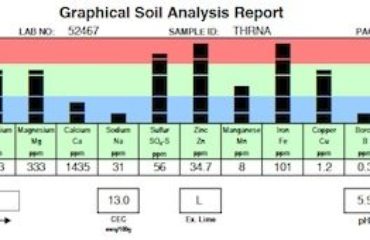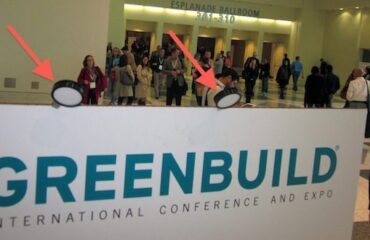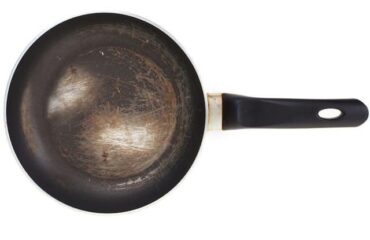Sick Building

What is a Sick Building?
There is often confusion over the definition of a sick building syndrome. We hear questions like, “Is my building sick?,” and, “How do I know if my building is sick?” Therein lies much of the confusion. Buildings don’t get sick, people do!
Sick Building Syndrome (SBS)
Determining if occupants suffer from Sick Building Syndrome includes an evaluation of the following symptoms and patterns:
- complaints of acute discomfort (.e.g, headache; eye, nose or throat irritation; dry cough; dry or itchy skin; dizziness and nausea; difficulty concentrating; fatigue; and sensitivity to odors)
- unknown cause of symptoms
- most symptoms vanish shortly after occupants leave the building
Sound familiar? In 1984 the World Health Organization issued a report suggesting that up to 30% of new and remodeled buildings may have excessive complaints about indoor air quality. This is an enormous number of buildings across the world, and the cost (medical and lost productivity) of Sick Building Syndrome is astronomical. Yet we still fill our buildings with toxic building materials and neglect basic principals of building science that result in moisture and mold problems in our buildings.
Sick Building Symptoms vs. Building Related Illness (BRI)
Building Related Illness is different from Sick Building Syndrome. BRI is generally allergic reactions or infections, and symptoms and patterns are as follows:
- complaints of specific symptoms such as cough, chest tightness, fever, chills, and muscle aches
- symptoms can be clinically defined and the cause of symptoms is known
- complaints continue after having left the building
Humidifier fever, Legionnaires Disease, skin rashes, hypersensitivity pneumonitis, and other illness related to bacteria, fungus (mold), and viruses are often classified as Building Related Illnesses, not Sick Building Syndrome.
Often times the words “malaise” and “lethargy” are used during BRI or SBS occupant interviews. According to Managing Indoor Air Quality, “malaise is a vague feeling of uneasiness or physical discomfort,” and “lethargy is characterized by abnormal drowsiness or torpor, apathy, sluggishness and great lack of energy.”
At the heart of every Sick Building Syndrome Inspection is an occupant survey that helps the investigator home-in on symptoms and develop a hypothesis about what in the building could be causing these symptoms.
Indoor Air Quality (IAQ) and Sick Building Syndrome
Indoor Air Quality is almost always associated with Sick Building Syndrome (and BRI). Whether from insufficient ventilation, excessive accumulation of indoor air pollutants, or a combination thereof, IAQ is almost always intimately tied to the symptoms of Sick Building Syndrome or Building Related Illness.
Ventilation is a crucial element in maintaining good IAQ. Point-source exhaust for known sources of contaminants (e.g., combustion appliances, paint/chemistry hoods, etc.) and moisture (e.g., stove top, shower, indoor pool, etc.) is a relatively easy way to reduce indoor pollutants. But when these systems are broken or occupants don’t know to operate them… a rapid accumulation of indoor pollutants can lead to Sick Building Syndrome.
The other half of the ventilation equation is the introduction of outside air. As we continue building tighter and tighter buildings for energy efficiency, we apparently haven’t been so good at bringing in sufficient outside air. If you have a carbon dioxide (CO2) meter and watch it as an unventilated room fills with occupants… you can see CO2 levels rise rather quickly. CO2 can be used as an indicator for measuring ventilation effectiveness, but there are more advanced methods involving flow hood measurements – similar to what you might see a Testing & Balancing contractor perform.
Indoor and outdoor contaminants contributing to Sick Building Syndrome or BRI may include any of the following (abbreviated list):
- VOCs and formaldehyde from building materials or occupational environments
- Microbial VOCs (MVOCs) from wet and actively growing colonies of mold or bacteria
- pesticides, fungicides and other biocides
- fuel or refrigerant leaks
- combustion byproducts
- dander, insects and other biological allergens (e.g., cat, dog, mouse, rat, cockroach, dust mite, pollen, etc.)
How do I know if I have Sick Building Syndrome?
The technical definition is simply one of symptoms, connection to the “cause,” and overall numbers. Sick Building Syndrome symptoms are more non-descript and general than BRI symptoms, and the (known or suspected) cause of SBS symptoms is unknown. SBS symptoms generally subside quickly after having vacated the sick building, while BRI symptoms may persist for days, weeks or even longer, after having left the building. If more than 20% of occupants are suffering SBS symptoms and there is no known source of the discomfort, then you may have a “sick building.”
If a building owner or tenant suspects a sick building, an Industrial Hygienist (IH) is usually called in to perform interviews and conduct a sick building syndrome inspection. Different companies provide different levels of thoroughness in their inspections, so if you’re concerned you may be in a sick building be sure you select an Industrial Hygiene expert that is qualified and motivated to be comprehensive and leave no stone unturned.
If you’re in the San Francisco Bay Area and suspect you have a sick building or Sick Building Syndrome and want a healthy building, Healthy Building Science is here to help!
Healthy Building Science is an environmental consulting firm which provides expert Sick Building Syndrome consulting services for commercial, multi-family buildings, offices, industrial and manufacturing workplaces, hospitals and medical facilities in the greater San Francisco Bay Area and all of Northern California.




